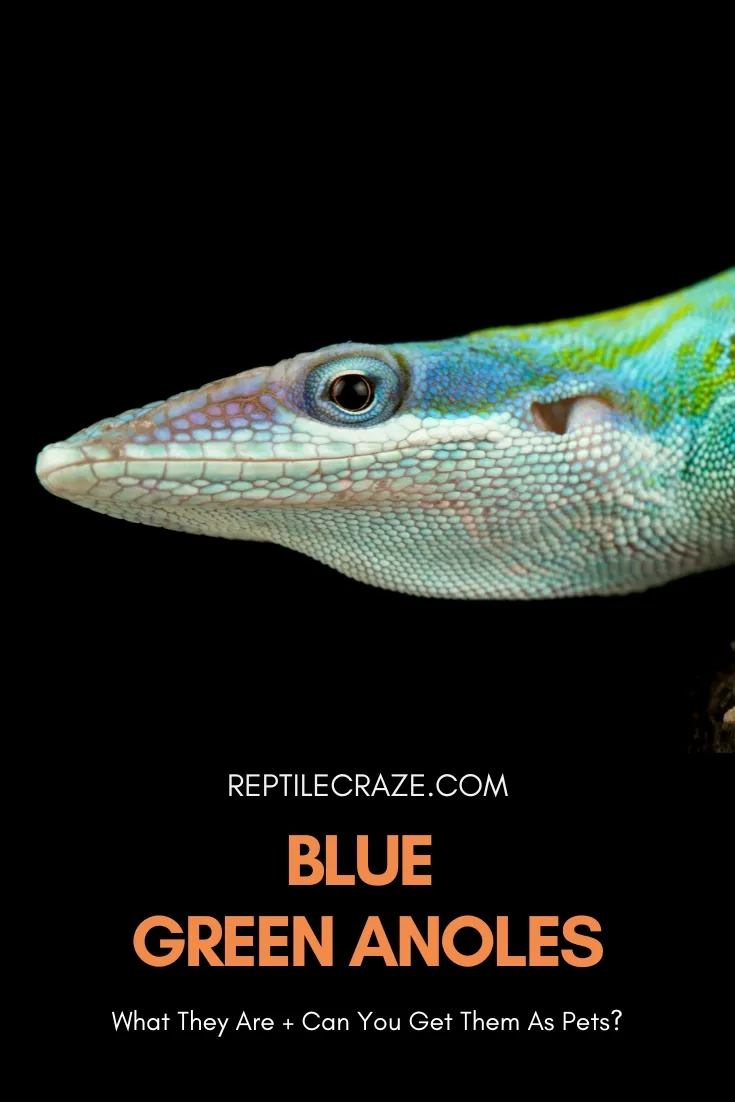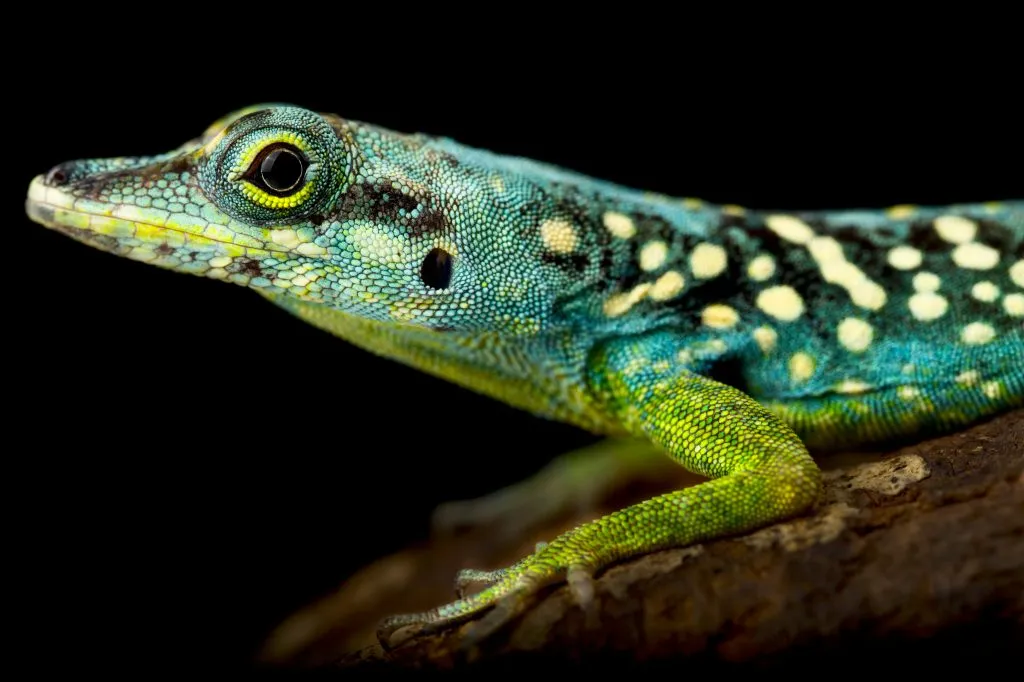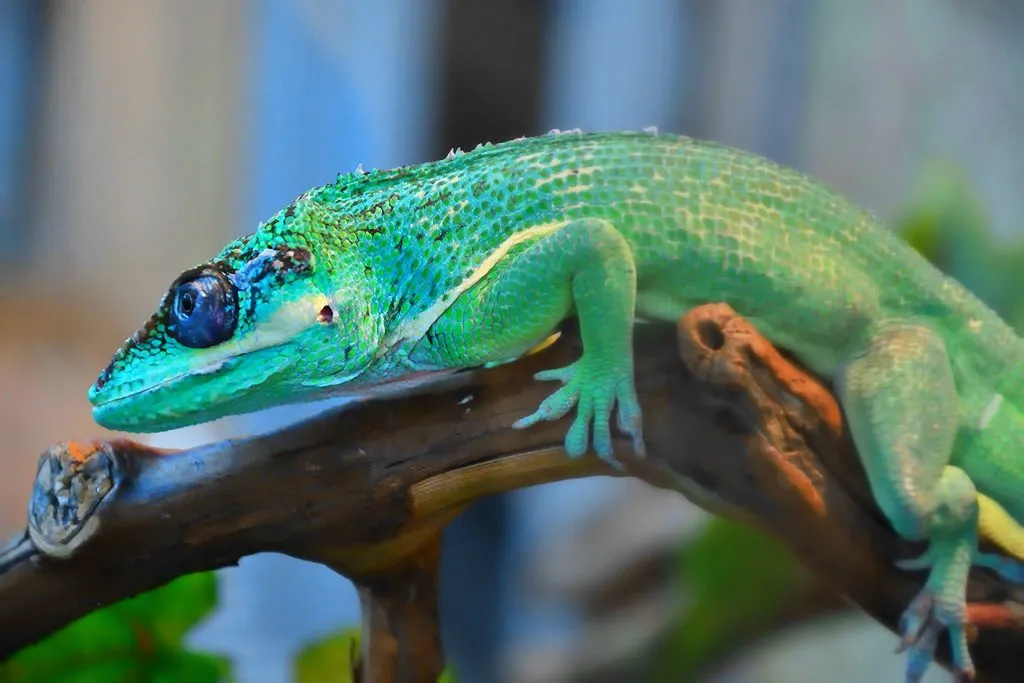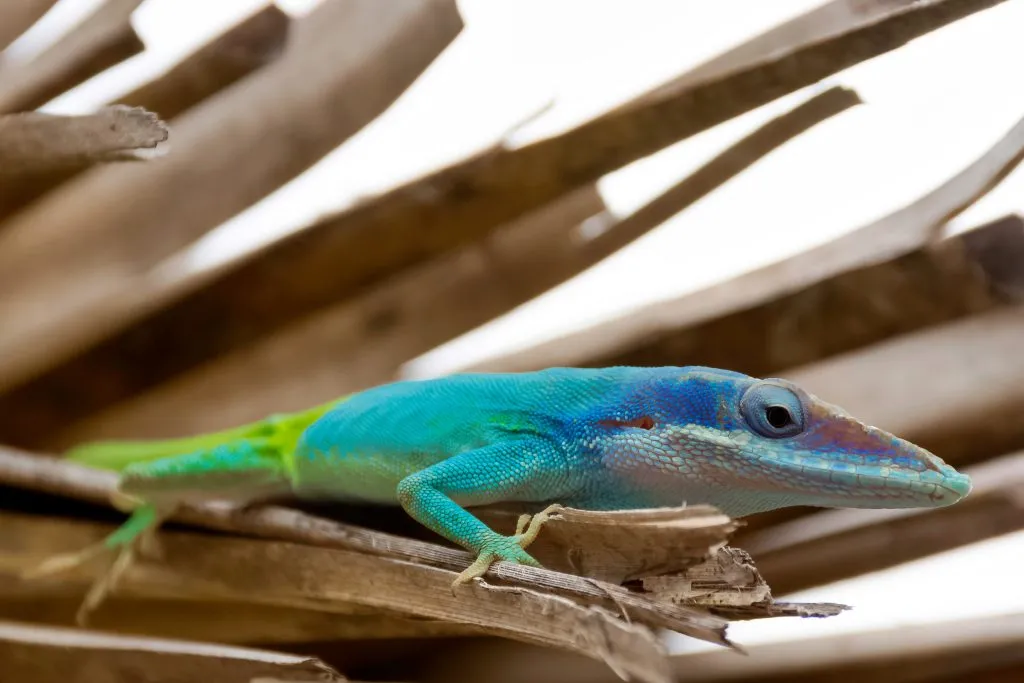
If you’ve heard about blue green anoles and were curious, you’ve probably looked them up online. A Google search for “blue green anoles” yields no particular anole species but rather a few that might meet the criteria for color.
Blue green anoles exist but point to more than one species. They may refer to Anolis Allisoni (Allison’s anole or Cuban blue anole), Anolis Roquet (Martinique anole or Savannah anole), Anolis Equestris Potior (Knight anole), or a rare mutation of the common Anolis Carolinensis (green anole).
Some of these blue green lizards stunningly display a blue-green coloration all around. Others have bodily regions highlighted in blue, and others in green. Discover blue green anoles that are making waves in the world of herpetology.
Table of Contents
The Blue-Phased Green Anoles
Nature can surprise us occasionally with a familiar green anole sporting a striking blue and green coloration.
If you spot one, know it’s not a new species but a rare mutation of Anolis Carolinensis or green anole. You’ve found a green anole lacking a particular pigment cell, resulting in rare color mutations called phases.
In this case, you have a blue-phased green anole.
Note: Some people say that these are not blue-phased green anoles. They are instead an own anole species, which we will come to later.
This gorgeous mutation displays a vibrant blue green color in parts of the body, signifying a lack of a particular color pigment called xanthophores.
The absence of some of this pigmentation results in a bright or pastel blue and green anole.
When the xanthophores are totally absent in the lizard, a condition known as axanthism, the green anole becomes completely blue.
A blue-phased anole is very rare, occurring once in every 20,000 hatched. As such, blue-phased anoles are high-prized in the pet trade.
Sadly, anoles with these color mutations do not live very long in the wild. Their blue color provides less camouflage while hunting for prey and avoiding predators than their natural leaf-green color.
Green anoles use their green hue to provide protective concealment.
The Martinique Anole

The Martinique anole or Savannah anole (Anolis Roquet) is endemic to the Caribbean island of Martinique.
There are several types of this species, ranging from green to gray-green, brown, or gray-brown, while some populations also have blue green in areas of their dorsal side.
The Knight Anole

Anolis Equestris Potior, or the Knight Anole, is a beautiful medium-sized lizard with various color markings, including green, bottle green, blue with mustard yellow and green stripes, green with gray-green stripes, and brown to black in its dark phase.
A native of Cuba, Knight anoles are now a widespread invasive species in South Florida, where they reproduce and spread freely.
Currently, the Knight anole is a prized reptile as it is rarely kept and bred. But breeding of this species is increasing among herpetologists.
Watch this fascinating video showcasing the expert care and breeding of this gorgeous blue green anole, Anolis Equestris Potior. Frank Payne is a senior herpetology zookeeper and has been breeding reptiles and amphibians for over 20 years.
Allison’s Anole

Endemic to Cuba, Anolis Allisoni also flourishes in the Bay Islands and Cayos Cochinos off the mainland of Honduras and Half Moon Caye off the mainland of Belize.
You may also find them in Florida, but these lizards are not native to the U.S.
Like the American green anole in size and look, male Allison’s anoles typically have bright blue heads and forelegs. At the same time, the rest of the body is a vibrant grass green.
Can You Find Blue Green Anoles For Sale?
Many reptile keepers are drawn to owning lizards with an unusual blue-green color.
Market prices of these anoles are likely to be high since they are rare. At the time of this writing (March 2023), a Knight anole is on offer for $4,000!
If you are sourcing one, catch the latest anole listing online at the Morph Market.
- Enchi Ball Python: A Unique and Stunning Morph of Python regius - March 27, 2025
- Emerald Tree Monitor: The Enigmatic Green Guardian of the Rainforest - March 26, 2025
- The Egyptian Cobra (Naja haje): A Fascinating Serpent - March 25, 2025
